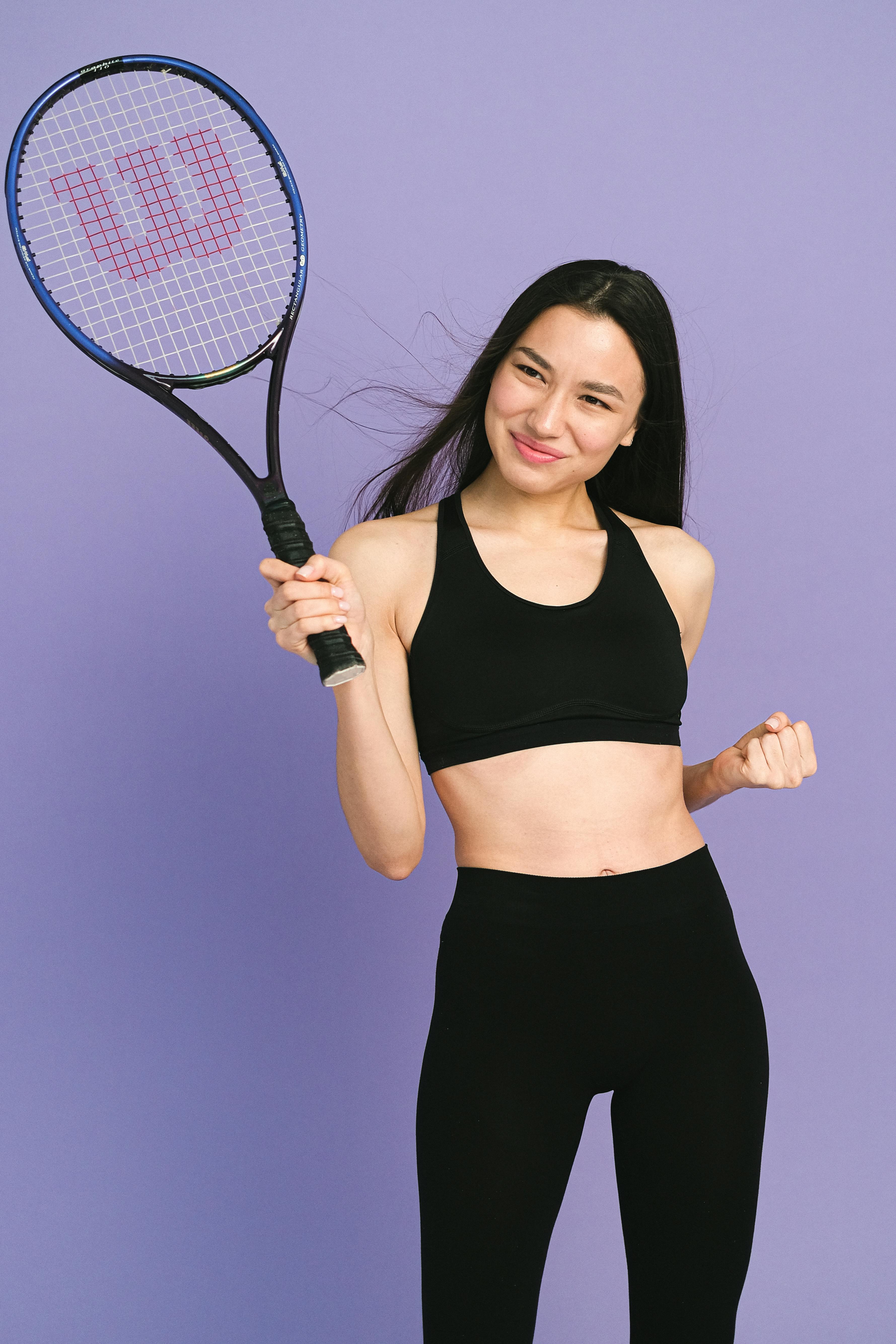
What is the Continental Grip
The Continental grip, also known as the “hammer grip,” is a specific hand positioning on the tennis racket that is commonly used for various shots in the game. It involves placing the base knuckle of the index finger on the third bevel of the racket handle, resulting in a neutral grip position. Unlike other grips, such as the Eastern or Western grip, the Continental grip allows for versatility in executing different types of shots.
Definition of the Continental Grip
The Continental grip is a way of holding the tennis racket where the hand is positioned in a way that the base knuckle of the index finger is resting on the third bevel of the racket handle. This creates a neutral grip that enables players to easily adjust their shot selection and technique based on the situation at hand. The Continental grip is often favored by more experienced players due to its flexibility and adaptability.
Origin of the Continental Grip
The origin of the Continental grip dates back to the early days of tennis when wooden rackets were used. Players realized that this grip allowed for better control and allowed them to execute a wider range of shots. It became especially popular with players who emphasized a serve-and-volley style of play, where speed, accuracy, and quick reflexes were essential. Over time, the Continental grip continued to be used and passed down as a fundamental grip among tennis players.
Overview of the Continental Grip
The Continental grip serves as a foundation for various shots in tennis, including volleys, serves, and slices. It allows players to have more versatility and control over their shots. With the Continental grip, players can easily adjust their racket face angle to generate different spins and angles, making it an essential grip for players who want to develop a well-rounded game. While it may take some time and practice to get used to the Continental grip, its benefits are well worth the effort.
Benefits of the Continental Grip
Improved Control and Accuracy
One of the key benefits of the Continental grip is the enhanced control and accuracy it provides. With this grip, players have better command over the racket face, allowing them to precisely place their shots. The neutral positioning of the hand makes it easier to control the angle and trajectory of the ball, enabling players to consistently hit their desired targets. Whether it’s a delicate drop shot or a powerful volley, the Continental grip empowers players to execute their shots with greater precision.
Better Defensive Shots
The Continental grip is particularly effective for defensive shots, such as slices and drop shots. Due to the grip’s neutral nature, players can easily manipulate the racket face to generate underspin, causing the ball to stay low and bounce unpredictably, making it challenging for opponents to return. Defensive shots require finesse and control, which the Continental grip provides, making it an invaluable tool for players who want to excel in defensive play.
Effective for Serve and Volley
The Continental grip is considered the grip of choice for players who specialize in the serve-and-volley style of play. When using this grip, players can generate maximum power and precision on their serves. The neutral grip allows for a quick transition from the backswing to the forward motion, resulting in explosive serves. Additionally, the Continental grip facilitates the quick reflexes needed for successful net play, enabling players to efficiently volley and finish points at the net.
Transitioning to the Continental Grip
When to Introduce the Continental Grip
Introducing the Continental grip to a young tennis player should be timed appropriately to ensure the player has developed a strong foundation with basic grips, such as the Eastern grip for groundstrokes. Once a player has gained proficiency and confidence with the Eastern grip, it may be a suitable time to gradually introduce the Continental grip. The transition can be accomplished through a gradual progression in training and gradually incorporating the Continental grip into specific shots.
Developing Proper Technique
Developing proper technique with the Continental grip requires a combination of practice and guidance. Proper technique involves finding the correct hand placement on the racket handle and understanding the nuances of adjusting the racket face angle. Players should focus on maintaining a relaxed grip with the base knuckle of the index finger positioned on the third bevel. Consistent practice with the Continental grip will help the player develop muscle memory and strengthen their ability to execute various shots.
Exercises to Strengthen Continental Grip
There are several exercises that can help strengthen the Continental grip and improve the player’s comfort with this grip. One effective exercise is the “shadow swing,” where the player mimics their stroke motion without a ball. By performing this exercise, players can focus on maintaining the Continental grip throughout the swing and ensuring proper technique. Another exercise is squeezing a tennis ball using the Continental grip, which helps strengthen the hand and forearm muscles necessary for maintaining a firm grip on the racket.
When Should My Child Use the Continental Grip
Playing on Grass Court
The Continental grip is particularly beneficial when playing on grass courts. Grass courts typically have a lower bounce, making it crucial for players to have better control over their shots. The Continental grip, when properly utilized, enables players to hit lower balls and execute slices effectively, which can be challenging for opponents to handle on grass courts. By using the Continental grip, your child can gain an advantage when playing on this unique surface.
Performing Serve and Volley
For young players looking to develop a serve-and-volley game, the Continental grip is a must-have. The grip allows for efficient transition from a powerful serve to agile net play. As your child advances and becomes comfortable with the Continental grip, they will have greater control over their serve and be able to move quickly to the net to capitalize on their opponent’s return. By using the Continental grip for serve and volley, your child can become a formidable force on the court.
Defensive Shots against Topspin
When facing opponents who produce topspin shots, the Continental grip becomes a valuable tool for your child’s defensive shots. The grip allows for easy manipulation of the racket face, enabling your child to handle high-bouncing topspin shots effectively. With the Continental grip, your child can generate underspin and execute slices that stay low and force their opponent into uncomfortable positions. By using the Continental grip against topspin shots, your child can turn defense into offense.
Common Mistakes with the Continental Grip
Gripping the Racket Too Tightly
One common mistake with the Continental grip is gripping the racket too tightly. This can lead to a lack of fluidity and control in shots. It is important to remind your child to maintain a relaxed grip to optimize the flexibility and maneuverability that the Continental grip provides. Encourage your child to find the balance between a firm grip for stability and a relaxed grip for fluidity of movement.
Improper Finger Placement
Another mistake often made is improper finger placement on the racket handle. The base knuckle of the index finger should be resting on the third bevel of the handle, but some players may mistakenly have it on a different bevel. It is crucial to ensure that your child has the correct finger placement to optimize the benefits of the Continental grip. Regularly check their hand positioning during practice sessions to help them develop muscle memory for the correct grip placement.
Inconsistent Grip Pressure
Maintaining consistent grip pressure throughout a shot is essential when using the Continental grip. Inconsistency with grip pressure can lead to less control and accuracy. Encourage your child to practice finding the right balance of grip pressure and to maintain it throughout their shot execution. Consistent grip pressure is vital for generating clean and precise shots with the Continental grip.
How to Determine the Correct Grip Size for Your Child
Importance of Proper Grip Size
Choosing the correct grip size for your child is crucial as it affects their comfort, control, and overall performance. A grip size that is too small or too big can result in reduced maneuverability, discomfort, and increased risk of injury. By ensuring the right grip size, your child can have a secure and comfortable hold on the racket, allowing them to fully utilize the benefits of the Continental grip.
Measuring Grip Size
To determine the correct grip size for your child, measure the distance between the tip of their ring finger and the second lateral crease on their palm. Use a ruler or measuring tape to obtain an accurate measurement in inches. Match the measured distance to the corresponding grip size chart provided by racket manufacturers to determine the appropriate grip size for your child.
Choosing the Right Grip Size
Once you have measured your child’s grip size, consult the grip size chart to select the correct size. Keep in mind that there may be slight variations among different racket manufacturers, so it is essential to refer to the specific chart provided by the brand of racket your child is using. If your child’s measurement falls between two grip sizes, it is generally recommended to choose the smaller size for better control and maneuverability.

Training Drills to Improve Continental Grip
Forehand and Backhand Drills
To improve your child’s Continental grip on both the forehand and backhand strokes, incorporate drills that focus on stroke mechanics and reinforcement of the grip. One effective drill is the “shadow swing,” where your child practices their swing motion without actually hitting a ball. Encourage them to maintain the Continental grip throughout the exercise and pay attention to their hand positioning and racket face angle. Another drill is the cross-court rally, where your child alternates hitting forehand and backhand shots with a partner, emphasizing proper grip technique.
Serve and Volley Drills
To enhance your child’s serve and volley game with the Continental grip, incorporate drills that emulate the serve and volley scenario. One drill is the “serve and volley target practice,” where your child aims to hit specific targets on the opposite side of the net after serving. This drill allows them to practice transitioning from the serve to the volley while maintaining the Continental grip. Another drill is the “cross-court passing shots,” where your child practices their volleys against shots hit by a partner. This drill hones their reflexes and improves their ability to execute volleys with the Continental grip.
Defensive Drill with the Continental Grip
To improve your child’s defensive shots with the Continental grip, incorporate drills that focus on handling different types of shots, such as topspin and slices. One drill is the “topspin defense drill,” where your child practices hitting defensively against topspin shots. Emphasize the use of the Continental grip to generate slicing shots that stay low and dip over the net. Another drill is the “slice and recover drill,” where your child practices executing slices and recovering quickly to defend against their partner’s shots. These drills help your child develop the necessary skills and confidence to handle defensive situations using the Continental grip.
Tips for Practicing the Continental Grip
Start Slowly and Progress Gradually
When practicing the Continental grip, it is important for your child to start slowly and progress gradually. Introduce the grip in isolated drills or specific shots, allowing your child to become familiar with the feel and mechanics of the Continental grip. As they develop comfort and proficiency, gradually incorporate the grip into broader aspects of their game. Starting slowly and progressing gradually helps your child build a solid foundation with the Continental grip and reduces the risk of injury or frustration.
Seek Professional Guidance
To ensure your child learns and incorporates the Continental grip correctly, it is highly recommended to seek professional guidance. An experienced tennis coach can provide personalized instruction and feedback, helping your child refine their grip technique and avoid common mistakes. A coach can also tailor training drills and exercises specifically to your child’s needs, accelerating their progress and enhancing their overall performance.
Regular Practice and Repetition
As with any skill in tennis, regular practice and repetition are key to mastering the Continental grip. Encourage your child to practice their grip technique during structured training sessions as well as in their own time. Regularly incorporating the Continental grip into their practice routines will allow your child to strengthen their muscle memory and develop a natural feel for the grip. Remember to provide positive reinforcement and support to keep your child motivated and engaged during their journey to mastering the Continental grip.

Comparing the Continental Grip to Other Grips
Eastern Grip vs. Continental Grip
The Eastern grip and the Continental grip are two distinct grips used in tennis. While the Eastern grip is more commonly associated with groundstrokes, the Continental grip offers more versatility across different types of shots. The Eastern grip provides stability and power for groundstrokes, while the Continental grip allows for greater control and flexibility for volleys, serves, and slices. Players who want to develop a well-rounded game should incorporate both grips, depending on the specific shot requirements.
Western Grip vs. Continental Grip
The Western grip, characterized by a more extreme hand position and the base knuckle of the index finger on the fifth or sixth bevel, is primarily used for generating heavy topspin on groundstrokes. While the Continental grip can also be used for groundstrokes, its neutral position is less conducive to producing extreme spin. The Western grip is ideal for players looking to hit aggressive topspin shots, while the Continental grip offers better control and versatility for a wider range of shots.
Semi-Western Grip vs. Continental Grip
The semi-Western grip, similar to the Western grip, involves placing the base knuckle of the index finger on the fifth bevel of the racket handle. This grip allows for a balance between power and control on groundstrokes. While the Continental grip is not commonly used for groundstrokes, some players may find success using it for specific shots, such as low volleys and slices. The semi-Western grip is more widely used for groundstrokes, while the Continental grip excels in net play and defensive shots.
Frequently Asked Questions about the Continental Grip
Can the Continental Grip be used for all shots?
While the Continental grip is versatile and can be used for a variety of shots, it may not be the optimal grip for every situation. It shines in moments that require control, precision, and flexibility, such as volleys, slices, serves, and defensive shots. However, for powerful groundstrokes that require the generation of topspin, other grips like the Eastern or Western grip may be more suitable. It is important for players to develop proficiency with multiple grips to adapt to different shot demands.
Can the Continental Grip cause any injuries?
When used correctly and with proper technique, the Continental grip does not inherently cause injuries. However, it is essential for players to maintain proper form, including a relaxed grip and consistency in grip pressure, to avoid unnecessary strain on their hand, wrist, and arm. Players should also listen to their bodies and rest if they experience any discomfort or pain while using the Continental grip. Working with a qualified coach and seeking professional guidance can help prevent injuries and ensure proper technique.
What age is suitable to start using the Continental Grip?
The appropriate age to start using the Continental grip may vary depending on the individual child’s physical development and skill progression. Generally, it is recommended to introduce the Continental grip after a child has developed a solid foundation with basic grips, such as the Eastern grip. This typically occurs around the age of 10 or older, when a child has gained sufficient strength, coordination, and motor skills to handle the nuances of the Continental grip. It is important to consult with a tennis coach or professional to assess the readiness of your child for using the Continental grip.



